Horrified by the mass industrial slaughter of the Holocaust, countries across the globe came together after the Second World War with the goal of putting an international prohibition on genocide.
This meant trouble for Canada, as the man who coined the term “genocide,” and who largely set the terms for what the United Nations Genocide Convention would be debated on in the late 1940s, had a definition of it broad enough to cover the country’s ongoing treatment of Indigenous people. So, Canada did its best to ensure that if a law prohibiting genocide was passed, its terms would be narrow enough to protect the country from accusations of the gravest of crimes.
It succeeded. And when it came time to adopt the convention domestically, it would be done in such a way that no new laws were actually created, and it wouldn’t have any real force within Canada until some 50 years after its first ratification.
This is the story of how Canada, the world’s do-gooding boy scout, did its part to take the teeth out of the international definition of genocide, all the while continuing its program of forced assimilation and cultural suppression of Indigenous people.
Cultural Genocide and Early Canada
Rafał Lemkin was a Polish Jewish lawyer who escaped the country in 1939, and eventually arrived in the United States in 1941. Lemkin, who would also be an advisor to the prosecution team at the Nuremberg trials, wrote what was essentially the first draft of the Convention on the Prevention and Punishment of the Crime of Genocide — the long title of the first UN human rights treaty — and began circulating it to various national delegations.
The draft was based on his 1944 book Axis Rule In Occupied Europe: Laws Of Occupation, Analysis Of Government, Proposals For Redress, in which he coined, and defined, the crime of genocide: “Generally speaking, genocide does not necessarily mean the immediate destruction of a nation, except when accomplished by mass killings of all members of a nation. It is intended rather to signify a coordinated plan of different actions aiming at the destruction of essential foundations of the life of national groups, with the aim of annihilating the groups themselves. The objectives of such a plan would be disintegration of the political and social institutions, of culture, language, national feelings, religion, and the economic existence of national groups, and the destruction of the personal security, liberty, health, dignity, and even the lives of the individuals belonging to such groups.”
Lemkin added, “Genocide has two phases: one, destruction of the national pattern of the oppressed group; the other, the imposition of the national pattern of the oppressor. This imposition, in turn, may be made upon the oppressed population which is allowed to remain, or upon the territory alone, after the removal of the population and the colonization of the area by the oppressor’s own nationals.”
In the two phases of Lemkin’s genocide definition, you can see the whole arc of colonization on this land, particularly of the prairies.
Clearing The Plains For Settlers
The 2013 book Clearing The Plains, written by University of Regina professor James Daschuk, traces the history of Indigenous people in the west of what is now Canada. It shows how Indigenous life was essentially destroyed on the plains from the days of fur trading, all the way through the colonization of what are now the western provinces by white settlers.
It details how first the fur trade spread disease — particularly small pox — to a population that had never been exposed to many European pathogens, and therefore had no built immunity. This caused horrific death tolls that would in many cases decimate various First Nations.
Then came the violence, liquor and coercion of the later fur trade, as more traders made their way westward. The hunting of beaver did serious damage to the western ecosystem, while the hunting of buffalo to near extinction put immense pressure on the food supply for Indigenous people.
Finally, there was Confederation, and the final clearing of what would become the western provinces. This all forced many Indigenous people of the prairies to move to an agrarian way of life in a matter of years.
In Treaty 6, signed in 1876, First Nations were able to get in writing that if they moved onto reserves, the government would be responsible for feeding them in times of famine. In 1878, a food crisis arrived that caught everyone, particularly the government, unprepared.
Food relief on a scale necessary for survival was slow to arrive to the reserves. Things became worse when Prime Minister John A. Macdonald and his Conservative party were brought back to power that year, as they took advantage of the crisis to move Indigenous people off their lands and onto reserves to make way for the Canadian Pacific Railway.
Daschuk writes: “Faced with a pressing agenda of development and saddled with thousands of starving people across the prairies, the government used food as a means to control the indigenous population.”
Mary-Ellen Kelm, a professor of history at Simon Fraser University, writes in a response to Daschuk’s book: “When Canadian officials used starvation to coerce First Nations to take treaty, to force them onto reserves, and to strip them of their lands and livelihoods, Canadian officials most certainly aimed to destroy the self-governing potential of First Nations.”
Prime Minister John A. Macdonald, that modern hero to so many conservatives, put the reasons for limiting the rations in cold, brutal terms: “We cannot allow them to die for want of food … [W]e are doing all we can, by refusing food until Indians are on the verge of starvation, to reduce the expense.” Of course, the rations provided by the government weren’t only inadequate in amount, but because of widespread corruption up and down the chain, they were often so rotten as to be inedible — this would compound famine with widespread disease.
In Parliament, the opposition charged that providing supplies this poor to people they’d signed a treaty with was a “fraud.” Macdonald replied in the Commons in typically callous terms: “It cannot be considered a fraud on the Indians because they were living on Dominion charity … and, as the old adage says, beggars should not be choosers.”
Genocide By Assimilation
The second phase in Lemkin’s definition of genocide is “the imposition of the national pattern of the oppressor.” The goal is, in a word, assimilation.
In Canada, the first part of this phase was the reserve system. Eventually, Daschuk writes, a pass system would be introduced that would keep Indigenous people whose Nations had signed a treaty “on their reserves and away from European communities.”
But there was more to come, as Macdonald’s government initiated another brutal program that leaves its mark today on the survivors still with us: the residential school system. While it was designed to seem like it was meant to educate Indigenous children, its actual goals were to permanently break the chain between Indigenous youth and their culture, history, and families.
As Macdonald himself said on the floor of the House of Commons in 1883: “When the school is on the reserve the child lives with its parents, who are savages; he is surrounded by savages, and though he may learn to read and write his habits, and training and mode of thought are Indian. He is simply a savage who can read and write. It has been strongly pressed on myself, as the head of the Department [of Indian Affairs], that Indian children should be withdrawn as much as possible from the parental influence, and the only way to do that would be to put them in central training industrial schools where they will acquire the habits and modes of thought of white men.”
Macdonald wanted to eliminate Indigenous people from post-confederation Canada, not just in body, but in spirit, too. And it was not just the cause of one particular man. As the Deputy Superintendent General of Indian Affairs, Duncan Campbell Scott, told Parliament in 1920, “Our object is to continue until there is not a single Indian in Canada that has not been absorbed into the body politic.”
The banal name “residential schools” belies what awful places they were. Run primarily by various denominations of the Christian church, with funding and support from the federal government, they were located far from the children’s families, built poorly and maintained worse, and were the site of rampant physical and sexual abuse. These conditions turned the schools into ideal places for diseases, such as tuberculosis, to take hold. In the 1930s and 40s, according to a recent Canadian Press report, childhood tuberculosis rates in residential schools were more than 10 times the rate among the rest of Canada.
In total, more than 150,000 Indigenous students came through the residential school system, with the last one closing in 1997. At least 4,100 of these children died there, with estimates ranging up to 6,000, though it’s nearly impossible to determine the exact number of deaths due to poor record keeping. In recent months, more than 1,300 unmarked graves at the sites of these schools have been found.
The 2015 Truth and Reconciliation report sums up this history: “For over a century, the central goals of Canada’s Aboriginal policy were to eliminate Aboriginal governments; ignore Aboriginal rights; terminate the Treaties; and, through a process of assimilation, cause Aboriginal peoples to cease to exist as distinct legal, social, cultural, religious, and racial entities in Canada. The establishment and operation of residential schools were a central element of this policy, which can best be described as ‘cultural genocide.’”
Purging Cultural Genocide From The Convention
With these policies in mind, the Canadian government pushed to have any references to cultural genocide purged from the UN Convention in order to avoid being charged of genocide.
In a July 1948 diplomatic cable — approved by then-foreign affairs minister, and later Nobel Peace prize winner, as well as Canadian prime minister, Lester Pearson — sent to the Canadian UN delegation, the government made its position clear: “You should support or initiate any move for the deletion of Article three on ‘Cultural’ Genocide. If this move not successful, you should vote against Article three and if necessary, against the Convention. The Convention as a whole less Article three, is acceptable, although legislation will naturally be required to implement the Convention.” (The cable was dug up by researcher Edward Sadowski, and previously reported by the National Post. Sadowski kindly provided a copy to Passage.)
The push to remove cultural genocide may have been one Canada made itself a part of, but it wasn’t the leader, in fact having an exaggerated sense of its importance in the events that followed.
In his 2003 book Genocide in International Law: The Crime of Crimes, international law professor William A. Schabas details the debates that went into the drafting of the Convention, and the role of the various UN members in shaping the document. In the early stages, the U.S. was the primary driver of opposition, with some support from France. The Soviet Union was in favour of its inclusion, and pushed for it at the early drafting committee and later in the UN as a whole.
But after the committee ended, opposition to keeping cultural genocide in the document grew. Schabas writes, “It was clear that the issue had hit a nerve with several countries who were conscious of problems with their own policies towards minority groups, specifically indigenous peoples and immigrants.” Sweden, Brazil, New Zealand, South Africa and Canada, among others, all opposed making cultural genocide a crime, for various reasons.
The Canadian delegation leaned on that old favourite excuse: jurisdiction. If there was a cultural genocide provision in the Convention, the government would have to submit certain reservations to the treaty, “as the Canadian Constitution limited the legislative powers of the Federal Government to the benefit of the provincial legislatures,” the delegation told the UN.
In the end, the countries opposed to the inclusion of any reference to cultural genocide would win out.
Ratifying The Convention, But Not Really
Canada ended up signing the UN Genocide Convention treaty in November 1949, but it took until May 1952 for it to come up for study in debates of the parliamentary foreign affairs committee. By this point, more than 30 other countries around the world had ratified the treaty, and it was regarded as strange that one of the states instrumental in shaping the document had yet to formally sign on.
Part of the delay was due to the fact that despite Canada being able to have cultural genocide stripped from the document, there were still parts of the treaty that could put the country in an awkward spot, and possibly open it up to internal court cases and lawsuits, particularly the section discussing: “Forcibly transferring children of the group to another group.” In a 2002 paper, St. Thomas University Native Studies professor Roland Chrisjohn and co-authors argued that this section alone makes it “impossible to deny” that Canada is guilty of genocide.
When the debate did come up, Chrisjohn and his co-authors write, “Canada consequently adopted a more complex strategy, a strategy upon which they had already embarked when eviscerating Lemkin’s proposals. ‘Genocide’ would be redefined yet again in a Canadian context.”
One official told the foreign affairs committee during these debates that, “The opinion of the deputy minister of justice, which is accepted by the Canadian government, is that the provisions of the Criminal Code as they are now cover all the possibilities and are such that any of the acts in articles II and III are punishable under our law.” In effect, while the government would officially ratify the convention, it would change none of its laws, as it believed it wasn’t necessary.
For example, assault, homicide, threatening to kill, maim someone or take a person’s property, false imprisonment, and failure to provide the necessities of life — which the government said might come together to be genocide when directed at a particular group — were all against the law already. A Justice Department official told the committee this applied to the forcible transfer of children as well, saying, “That is obviously kidnapping, I should think. In the first place it is kidnapping and it is also false imprisonment.”
The committee and parliament ultimately agreed with this view that no new laws needed to be made. This is important because the Convention was written with the understanding that perpetrators would be punished within a signing country’s own justice system, as there was no international body to prosecute anyone who may have committed genocide at the time, and there was no provision for extraditing individuals even if such a body existed. The International Court of Justice did exist, but as an official told the committee, it could only release a “declaratory judgement saying that such a country is not observing the terms of the convention as ratified.”
Canada swiftly ratified the Convention that September. However, the codification of genocide would not fully enter Canadian law until 2000, when Canada passed the Crimes Against Humanity and War Crimes Act, in order to comply with the 1998 Rome Statute that created the International Criminal Court. Conveniently, this act, which finally put the forcible transfer of children into writing as a crime, was enacted after the last residential school was closed.
The Genocide Continues
Despite the significant delay, the official government line when Canada signed onto the convention was that it was another example of the country showing the world the right example for how to live in peace.
Pearson ended his speech in the Commons putting forward the motion to ratify the Convention by saying: “In conclusion may I say that the possibility of the crime of genocide being committed in Canada seems to me to be extremely remote. I stress the fact that the broad purpose of this convention is to bring the law throughout the world up to the standard which I think we may say without boasting happily exists already in our own country. In approving this convention unanimously, which I hope parliament will do, we will be proclaiming throughout the world that genocide is considered by us a monstrous crime. We will be doing something to make it more difficult for any other country to commit that crime.”
That proclamation was a hollow one. Canada had been committing genocide in one form or another since Confederation. The settlement of the west and the construction of the Canadian Pacific railway were made possible by genocide, both physical and cultural. While proclaiming its belief in stamping out genocide abroad, Canada was committing it within its own borders.
So today, Indigenous communities are searching for the graves of children unaccounted for at residential schools.
The Canadian government is still fighting the claims of Indigenous people in court, ignoring crimes committed against Indigenous women and girls, keeping Indigenous people on reserves without basic things like clean drinking water, and using extreme force to push national infrastructure through Indigenous lands.
And Canada is still trying to deny that what it has done, and is doing, is genocide. In June, NDP MP Leah Gazan tried to get the House of Commons to grant unanimous consent acknowledging Canada’s treatment of Indigenous people as genocide. She failed.
In effect, Canada is still committing genocide. The government has just done its best to never let anyone call it that.

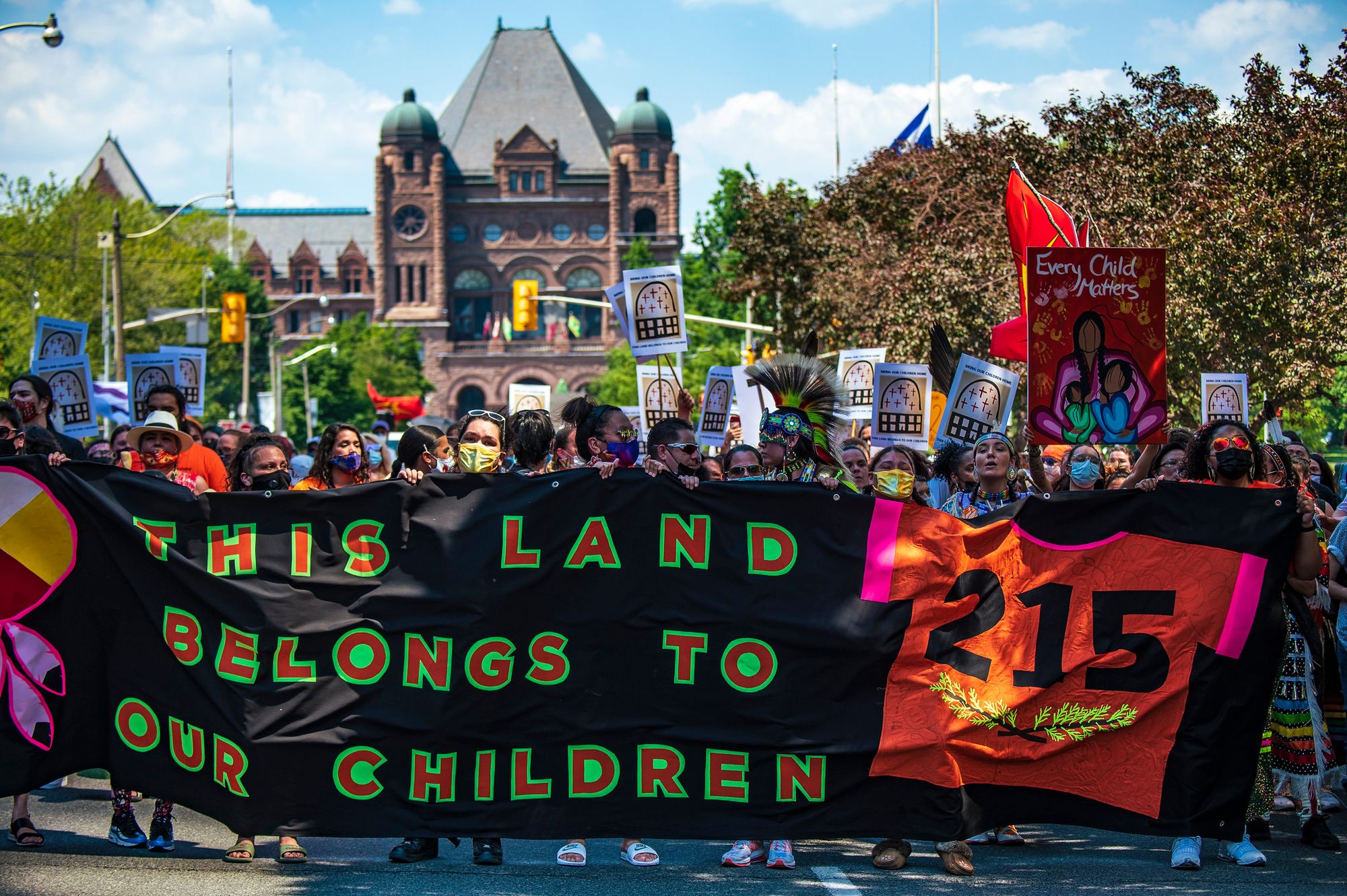
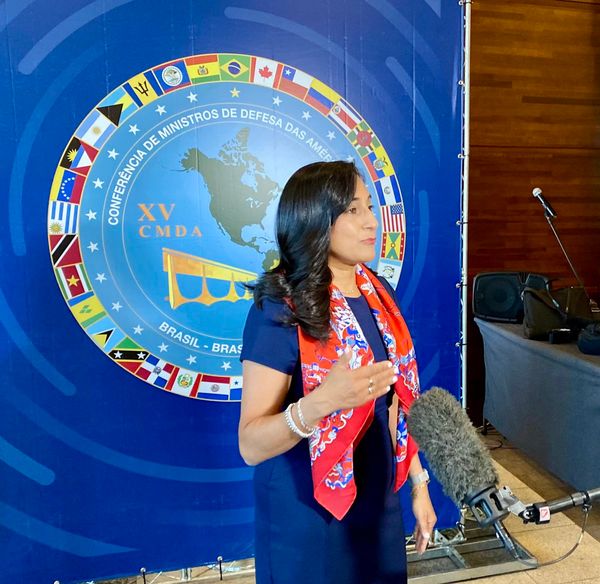
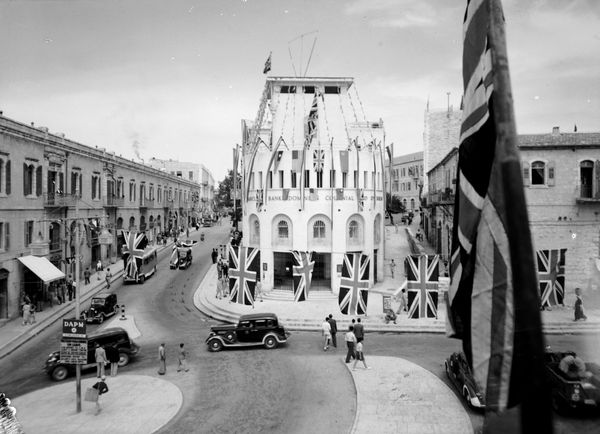
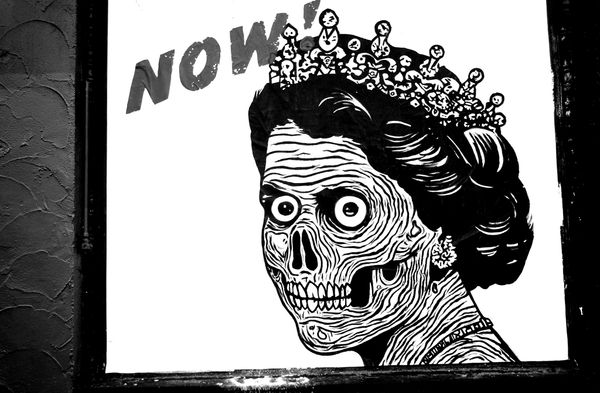
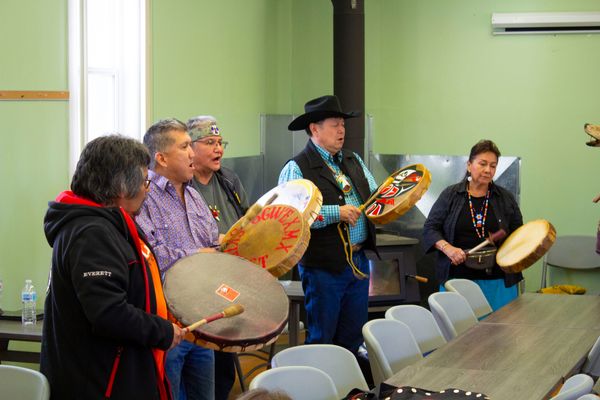
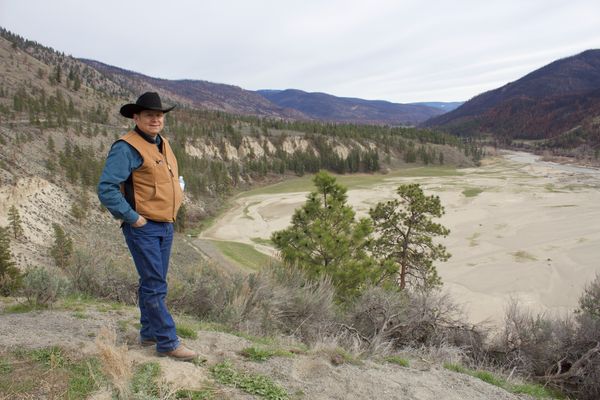
Member discussion